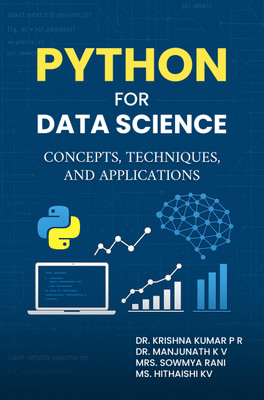Python for Data Science : Concepts, Techniques, and Applications(Paperback, Dr Krishna Kumar P R, Dr. Manjunath K V, Mrs. Sowmya Rani, Ms. Hithaishi KV)
Quick Overview
Product Price Comparison
This book serves as a comprehensive guide to learning data science through Python, combining theoretical foundations with practical coding examples. It is structured to take readers from the basics of Python programming to advanced data science applications, making it suitable for students, educators, and professionals.The content begins with the foundations of data science and Python programming, explaining core concepts like predictive modeling, customer segmentation, fraud detection, and personalized recommendations. It also introduces various data types such as text, numeric, categorical, image, audio, video, geospatial, and time-series data.Subsequent chapters cover methods of data collection and generation, including surveys, experiments, observational studies, web scraping, and sensor-based data gathering. Readers are guided through Python-based implementations for acquiring and simulating datasets.A significant portion of the book is devoted to data visualization techniques, exploring charts, histograms, scatter plots, heatmaps, treemaps, word clouds, 3D visualizations, and more. Each visualization type is explained with Python code and outputs, enabling learners to understand both theory and application.The book also emphasizes data manipulation, preprocessing, and cleaning using pandas, covering tasks such as handling missing values, outliers, encoding categorical variables, and ensuring consistency. Exploratory Data Analysis (EDA) is explored in detail, introducing descriptive statistics, measures of central tendency, dispersion, and position with step-by-step Python examples.Later chapters introduce statistical modeling concepts integrated with programming techniques, and the text concludes with case studies and data science relationships, demonstrating practical applications across industries.Overall, this book blends statistical theory, computational methods, and applied Python programming, making it a valuable resource for mastering data science concepts and applying them to real-world problems.


